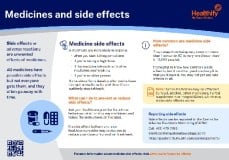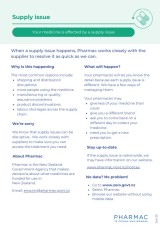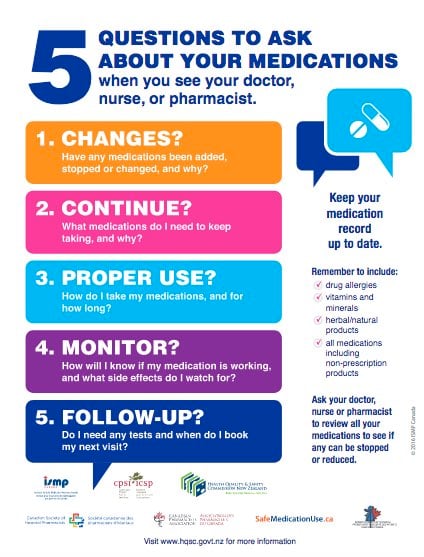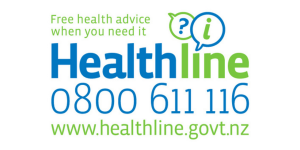Ultraproct
Key points about Ultraproct
- Ultraproct® is used to treat haemorrhoids (piles) and anal fissures.
- It’s available as suppositories and an ointment.
- Find out how to use them and the possible side effects.

Ultraproct® is used in adults to treat haemorrhoids (piles), anal fissures or proctitis (mild inflammation in the rectum). It contains the corticosteroid fluocortolone and a local anaesthetic called cinchocaine. Fluocortolone reduces swelling and the local anaesthetic makes the area feel less sore and itchy.
It shouldn’t be used if you have any infection in your bottom (rectum) as it can hide the signs of this infection.
In Aotearoa New Zealand, Ultraproct is available with a prescription written by a prescriber.
In Aotearoa New Zealand, Ultraproct® is available as an ointment and as suppositories. Suppositories are for internal haemorrhoids, and the ointment is for external haemorrhoids. Read more about types of haemorrhoids and their symptoms.
- Always use your Ultraproct exactly as your healthcare provider has told you. The pharmacy label on your medicine or the packaging will tell you how much Ultraproct to use, how often to use it and any special instructions.
- Ointment: A small amount of Ultraproct ointment is usually applied 4 times a day for the first day. This is then reduced to 2 times a day for the second week.
- Suppository: Ultraproct is usually recommended as 1 suppository, 3 times a day for the first day. This is then reduced to once a day for the second week.
- Don’t use Ultraproct ointment or suppositories for more than 4 weeks unless advised to by your healthcare provider.
- Timing: It’s best to use Ultraproct® after a bowel motion (poo). Wash and dry your rectum and wash your hands before using Ultraproct.
- Suppositories: These should be stored in the fridge. Before using, remove 1 from the fridge and warm it up in the palm of your hand with the wrapping on. Then remove the wrapping before inserting. Read more about how to use suppositories.
- You may feel the urge to force out the suppository. The urge should stop once the suppository melts, which should only take a few minutes.
- Ointment for the outside of your rectum: Wash your hands with soap and water or wear gloves. Apply a small amount of ointment to a finger. Gently apply to the affected area.
- Ointment for internal application: The ointment comes with a nozzle for application into your rectum. Attach the nozzle and its cap tightly onto the ointment tube, then remove the cap and insert the nozzle into your rectum. Gently squeeze the tube so some ointment comes out. Squeeze the tube as you take the nozzle out of your rectum. Wash the nozzle in warm, soapy water before putting the cap back on.
- Sometimes after using it, the suppository or ointment may leak out a bit. You can use absorbent pads in your underwear just in case.
Like all medicines, Ultraproct can cause side effects, although not everyone gets them. If you're concerned about any symptoms you think might be related to your medicine, talk to your healthcare provider. The following information offers some guidance but doesn't include all possible side effects.
Common side effects
Tell your healthcare provider if these side effects bother you.
-
A feeling of burning, stinging or tingling in the rectum.
Tell your healthcare provider immediately or phone Healthline free on 0800 611 116 if these occur
- Changes to your vision such as blurred vision.
Read more about medicines and side effects and reporting a reaction that you think might be a side effect.
The following links have more information on Ultraproct.
Ultraproct(external link) Medsafe Consumer Medicine Information, NZ
Ultraproct (suppositories and ointment): Supply issue(external link) Pharmac, NZ
Brochures
Medicines and side effects(external link) Healthify He Puna Waiora, NZ, 2024
5 questions to ask about your medications(external link) Health Quality and Safety Commission, NZ, 2019 English(external link), te reo Māori(external link)
Supply issue(external link) Pharmac, NZ
References
- Cinchocaine + fluocortolone hexanoate + fluocortolone pivalate(external link) New Zealand Formulary
- Compound haemorrhoidal preparations with corticosteroids(external link) New Zealand Formulary
- Ultraproct(external link) Medsafe datasheet, NZ

Medicines and side effects
Healthify He Puna Waiora, NZ, 2024

Supply issue
Pharmac, NZ, 2025

Health Quality and Safety Commission, NZ, 2019 English, te reo Māori
Credits: Healthify editorial team. Healthify is brought to you by Health Navigator Charitable Trust.
Reviewed by: Angela Lambie, Pharmacist, Auckland.
Last reviewed:





